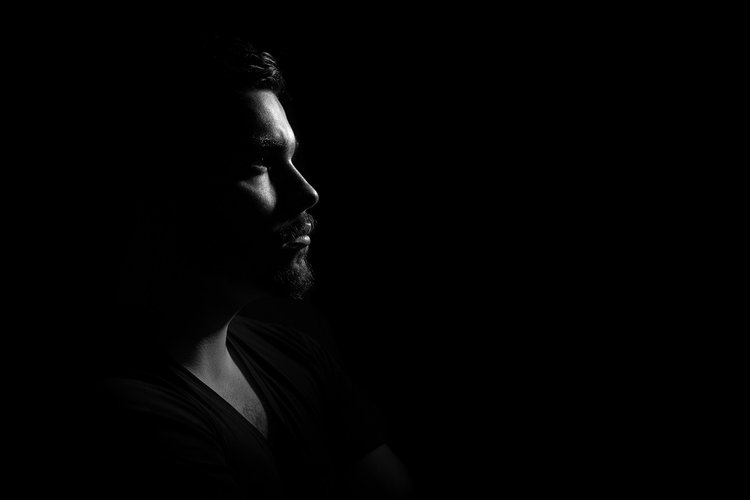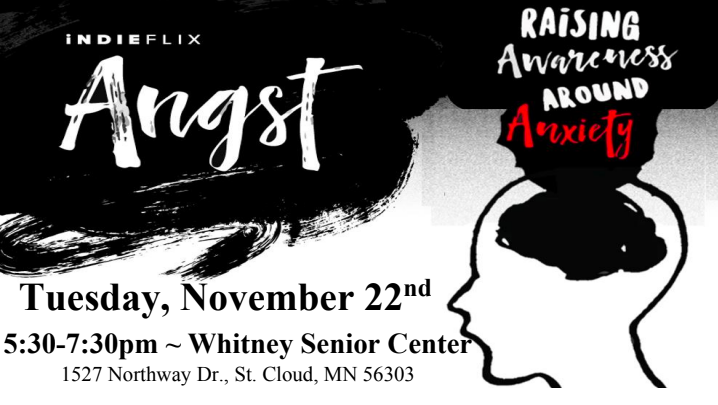November 2022 News!
Hello to each of you—
With November comes the sentiment of gratitude. With gratitude, it’s typical to focus on what is present, right here in front of us. The focus is on today, the here and now. As we experience and move through grief, we must allow ourselves to feel that pain, to acknowledge the ache that will never go away. It can be especially hard as we approach another holiday season.
Grief doesn’t necessarily end, but it will change shape. It happens by way of acceptance, through embracing a twist in our life’s story we hadn’t envisioned.
It is only when we work tirelessly to find the blessings and rejoice in the memories that we are truly able to let go.
Our gratitude always,
Reyne & Scott Roeder

Practicing Gratitude
The holidays come with a buoyancy that requires a certain attitude or expectation of gladness, celebration, and love. We all feel compelled to participate in the revery and joy. It’s what the holidays are for, after all. To gather, to revisit tradition, and in too many instances, to grieve.
The holidays for those experiencing grief, whether fresh or prolonged, can be excruciating. There are reminders of what is lost or different, and who may no longer be present or able to join the festivities. It can be painful to see celebration all around and act jubilant while inside, feeling a sense of despair and sadness. Practicing gratitude? That can seem nearly impossible.
Practicing gratitude while experiencing grief doesn’t feel instinctual or natural, and might seem unrealistic. Humans aren’t hard-wired to feel thankful while suffering, adopting a gratitude practice can help us move through the grief process more purposefully.
“Grief is part of the human condition,” says says Kingsley Gallup, MA, LPC and author of Project Personal Freedom, noting that grief comes from many types of losses. It can be the loss of dreams, time, self esteem, enthusiasm, relationships and loved ones. While the inevitability of grief is universal, each loss has its own nuances: losing a parent is different from losing a child; sudden, unexpected loss from a traumatic event will affect us differently than a death that was expected.
Regardless of the source of our grief—whether it’s a recent loss or a long-standing injury—Kingsley says that practicing gratitude is an effective way to reinstate joy in our lives.
“For anyone who’s grieving, isn’t that what we want? To feel joyful again?” Gallup asks. “Gratitude heals. I see it all the time, and it has healed me in my own journey.”

Seasonal Depression
Between summer solstice in June and winter’s near Christmas, our daylight dwindles by half. In November, we average about nine and a half hours of daylight per day. It’s not uncommon to feel the effects of the cold and darkness and waning of light this time of year.
An article from the New York Times covers seasonal affective disorder, or SAD—a type of depression that occurs with the changing of the seasons— that can affect up to 10 percent of people in the United States, depending on where they live.
Here are some of the most frequently asked questions about seasonal affective disorder, with answers from experts.
What is season affective disorder?
“One big, common misconception about SAD is that it’s just the ‘winter blues,’” said Kelly Rohan, a professor of psychological science and a clinical psychologist at the University of Vermont. When the days get grayer and colder and the holidays are around the corner, it’s not unusual to experience temporary feelings of malaise, tiredness or stress. But seasonal affective disorder is much more serious—a form of clinical depression, Dr. Rohan said—with symptoms that can last longer, and come and go with the seasons.
According to the National Institute of Mental Health, you may have seasonal affective disorder if you experience certain symptoms that start and stop during specific months, and that occur for at least two consecutive years. These can include near-constant and daily feelings of depression, loss of interest in activities you used to enjoy, changes to your appetite or weight, sluggishness and low energy, trouble falling asleep or oversleeping during the day, or even thoughts of death or suicide.
What causes season affective disorder?
A leading theory has to do with a shift in the biological clock. Normally, the body produces melatonin at night, which helps promote sleep. When the levels of melatonin taper off as sunrise approaches, that helps people wake up. But if you have winter SAD, melatonin peaks later and lingers for longer into the morning, making it harder to wake up and leaving you fatigued and groggy. Because you don’t reach peak wakefulness until later in the day, it’s harder to fall asleep once evening comes — perpetuating a cycle of insomnia, inadequate sleep and fatigue, and exacerbating depressive symptoms.
Most people who are vulnerable to SAD are most likely always susceptible to feeling down, according to Kathryn Roecklein, an associate professor of psychology at the University of Pittsburgh. But in the winter, light levels fall below a threshold and suddenly things are off balance.
How can season affective disorder be managed best?
Bright light therapy
“Bright light treatment first thing in the morning dramatically improves the vast majority of people with seasonal affective disorder,” Dr. Desan said. This involves sitting in front of a light therapy box, which mimics outdoor light, for about 30 minutes every day right when you wake up, preferably early in the morning. This should stimulate your body to produce the right hormones to increase your wakefulness and alertness to get you through the day, Dr. Desan said.
Cognitive behavioral therapy (C.B.T.)
C.B.T., a form of talk therapy that aims to shift faulty or unhelpful ways of thinking, can also be beneficial, Dr. Rohan said. If you say things like, “I hate winter” during a session, she said, the therapist will try to reposition those negative thoughts. “Even if we could take it down a notch to, ‘I prefer summer to winter,’” she said, that can result in a big shift in symptoms and mood.
Because cognitive behavioral therapy for SAD involves retraining your negative associations with darker months, it is the only treatment that could have long term benefits after doing it just once, Dr. Roecklein said. “It works in the winter when that person comes in for a treatment,” she said, “but then it also protects them from depression the next winter and the winter after that.”
Antidepressant medications
Seasonal depression can also be treated with antidepressant medications, like the selective serotonin reuptake inhibitors fluoxetine (Prozac), citalopram (Celexa), sertraline (Zoloft), paroxetine (Paxil) and escitalopram (Lexapro). Bupropion (Wellbutrin), another type of antidepressant medication, is the only drug approved by the Food and Drug Administration to prevent recurrences of seasonal major depressive episodes. If prescribed this medication for winter SAD, you would take it once a day from fall to early spring.

Angst Screening in November
Angst is a film that explores anxiety, its causes, effects, and what we can do about it. The filmmakers’ goal is to have a global conversation and raise awareness around anxiety. Angst features candid interviews with kids and young adults who suffer, or have suffered, from anxiety and what they’ve learned about it. The film includes discussions with mental health experts about the causes of anxiety and its sociological effects, as well as help, resources, and tools.
Immediately following the screening, a panel discussion with area mental health professionals will take place for further dialogue and Q&A.

Bless Our Veterans
This Friday the 11th marks Veterans Day, a day dedicated to those who served and continue to serve our country and our freedom. But for too many veterans, military experience means ongoing mental health, addiction, and suicide risk issues that hamper their ability to live the lives they so desperately deserve.
Each day in the U.S., 17 veterans die by suicide. The risk for suicide is 1.5 times greater than those who are not military. Between 19% and 44% of returning Iraq and Afghanistan soldiers meet criteria for PTSD, depression, or both. But, 47% of those veterans do not seek mental health support.
If you or one of your military heroes could benefit from services in Central Minnesota, here are some resources specific to veterans:
Central Minnesota Veteran Care—CentraCare The organization partners with We Honor Veterans, a pioneering campaign developed by the National Hospice and Palliative Care Organization in collaboration with the Department of Veterans Affairs. Visit for more details.
Mental Health Care at St. Cloud VA Hospital—The Behavioral Health Department offers both inpatient and outpatient services, including telehealth appointments. The VA provides consultation, evaluation, and treatment for a variety of issues impacting emotional well-being. See VA services.
NAMI Homefront—A free, 6-session educational program for families, caregivers, and friends of active military and veterans with mental health conditions. Learn more here.
Resources & Can't-Miss:
Give to the Max for Minnesota Nonprofits
Thursday, November 17th is Give to the Max Day, a statewide fundraising campaign that showcases an outpouring of support for thousands of nonprofits and schools across Minnesota. Jackson’s foundation benefits greatly from your support. Donate early!
Survivors of Suicide Loss Day
Saturday 11/19 is International Survivors of Suicide Loss Day, a time and place specific to those grappling with grief to connect and share hope. See details here.
Rise Up! With Kelly Doss
Event featuring Resiliency Coaching owner Kelly Doss on the topic of emotions, control, and how eating disorders affect different types of people. Thursday, 11/17 at Mindology Mental Wellness Center, 7pm.
National Suicide & Crisis Lifeline
Dial 988 or text 988.
